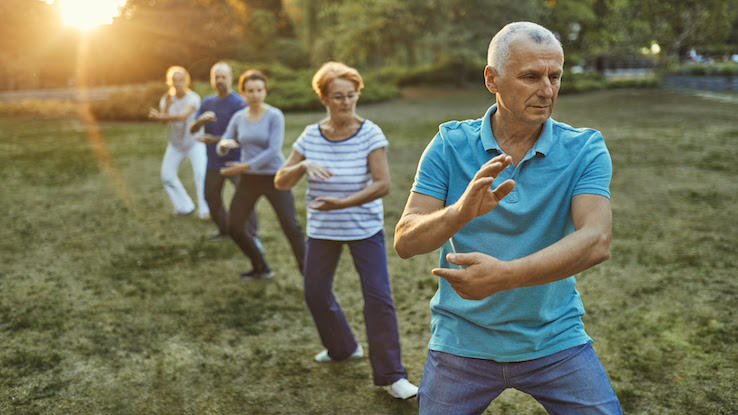
Tai chi is a popular low-impact exercise that’s been around for centuries. Combining meditation and movement, tai chi is excellent for both your body and mind, allowing you to build muscle strength and flexibility while aiding your mental wellness.
What you may not know? This calming exercise is a great fit for elderly folks looking to find a low-impact physical practice. So, whether you’re looking to incorporate more movement into your day or you know someone who might benefit from doing so, we’re delving into the incredible health benefits associated with tai chi.
Tai Chi: An Ancient Practice For Mind, Body, and Soul
Also known as “shadow boxing,” tai chi originated in ancient China as a martial arts form and is based in the Chinese philosophy of Taoism (or Daoism). Taoism stresses the natural balance found in everything as well as the importance of living in spiritual and physical harmony with nature. More specifically, tai chi focuses on the concept of yin and yang — a philosophy that states that two opposite forces can work in relationship together.
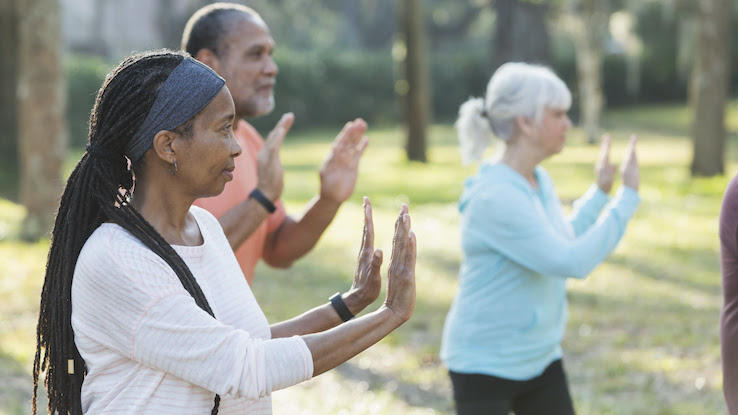
The series of low-impact movements that make up tai chi are named often named for likenesses in the natural world, such as “white crane spreads its wings,” though other moves are linked more closely to martial arts, such as “box both ears.” Most tai chi work is performed while in the standing position, requiring practitioners to take small steps at times, but it can be modified and done while seated, too.
Tai Chi’s Different Styles
There are also several different styles and forms associated with the practice of tai chi, including the Chen, Yang, Wu, and Sun styles. For example, the Chen style of tai chi was developed by Chen Wangting around 1670; although the movements are still slow, this style contains moments of explosive power and lower stances, all of which can be more physically demanding. On the other hand, the Yang style — the most popular form of tai chi created in the early 19th century by Yang Lu-chan — is marked by gentle, easy-to-learn movements, making it perfect for beginners and seniors alike.
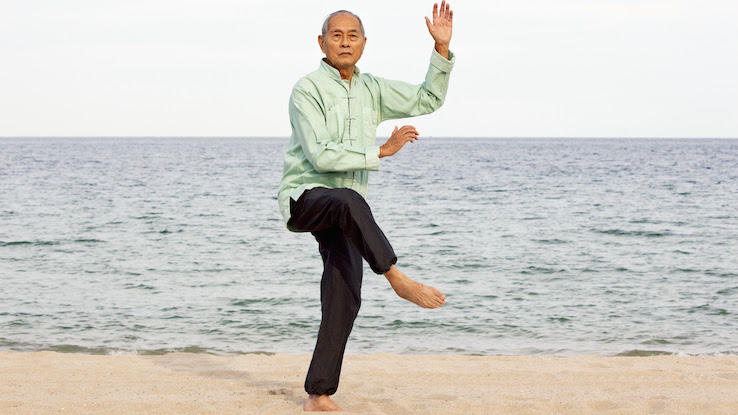
Although each style has its own characteristics, they all share the same essential principles, such as the connection between your mind and body, the necessity of controlling your movements and breathing, and the ability to generate positive, internal energy and jing (serenity).
Typically, a tai chi class will begin with a warmup portion. During this segment of the class, you’ll practice easy motions, like shoulder circles and rocking back to side, all of which help you loosen up and focus on your breathing. Next, the instructor will take you through a series of tai chi movements — and the amount of reps will vary depending on the class. Finally, most classes end with qigong — “breath work” or “energy work.” These few minutes of gentle breathing help you relax your mind and slow your heart rate.
The Health Benefits of Tai Chi
Since tai chi is low-impact, you may not glean the same benefits as you would by performing higher intensity workouts. However, tai chi still has a lot to offer. For starters, it can improve your upper and lower body strength if you practice it regularly. The movements also help strengthen your abdominal and back muscles and can aid you in reaching your flexibility and balance goals as well.
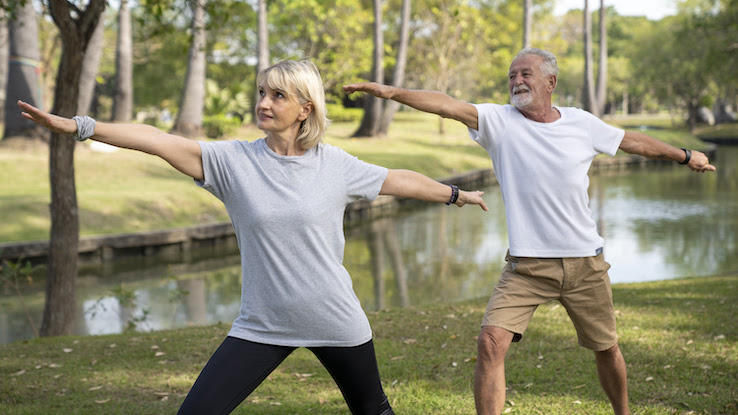
Because of all of these great benefits, experts have studied the impact of the exercise on those with specific health conditions. For example, it has been shown to improve the quality of life in people who have heart disease, cancer, and other chronic illnesses. Practicing tai chi has also helped ease pain caused by knee osteoarthritis, fibromyalgia, and chronic back and neck pain. Additionally, tai chi helps you improve your breathing, which is beneficial for folks with asthma or other respiratory conditions.
Just as the philosophy underpinning the practice suggests, tai chi is also beneficial for your mental health. Research has shown that practicing the martial arts form can help to reduce stress, anxiety, and depression. The breathing, movement, and mental concentration required for tai chi helps to distract you, even momentarily, from stress and anxiety. In the end, this can promote calmness and improve your mood.
Tai Chi: An Easygoing Workout for Seniors
With its low-impact movements and health benefits, tai chi is the perfect workout for seniors looking to incorporate movement into their day-to-day regimen. Unlike other practices, tai chi movements can be modified rather easily, making it more accessible. Of course, seniors should listen to their bodies and not push themselves too far. It also helps to have an experienced instructor on hand.
Practicing tai chi may help improve balance and stability, which, in turn, can help reduce falls. In fact, study in the Journal of the American Geriatrics Society stated that practicing tai chi can reduce the risk of falls by up to 50%. Not only does tai chi help with core stability and balance, but it also improves your bodily awareness.
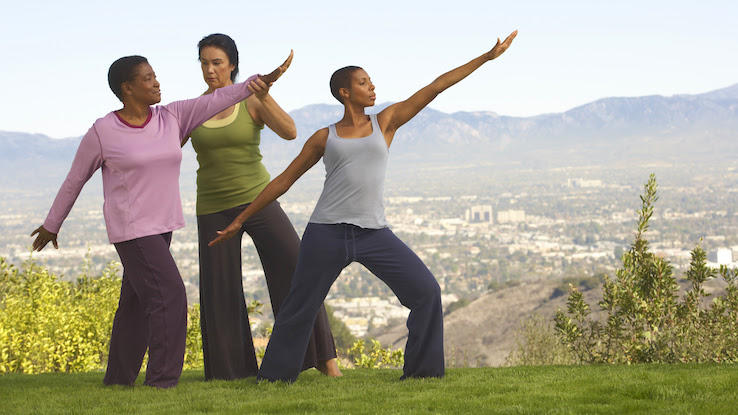
Studies have also shown that tai chi can help with our abilities to reason, plan, remember, and solve problems. Those with mild cognitive impairment due to dementia have seen some improvement by practicing tai chi. Not to mention, it can promote stronger immune systems and weight loss as well as better cardiovascular health, sleep, and posture. Best of all, it’s pretty easy for seniors to get started with tai chi; many senior facilities offer these classes. Moreover, you don’t need any special equipment — just comfortable, loose-fitting clothes.
Resource Links:
- “The History of Tai Chi” via Tai Chi for Health Institute
- “The Health Benefits of Tai Chi” via Harvard Health Publishing | Harvard Medical School
- “Tai Chi for Risk of Falls” via Journal of the American Geriatrics Society
- “Tai Chi for seniors: a safe way to improving health” via Lifeline Medical Systems Alert
- “Tai Chi and Qi Gong: In Depth” via National Center for Complementary and Integrative Health





